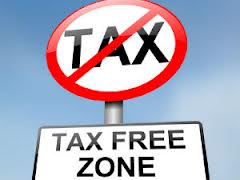 The good news is that wholesale price inflation is showing signs of falling. In November, the Wholesale Price Index (WPI) fell to 7.24 percent from 7.45 percent in October. Even though the consumer price index, which matters to you and me, is still high at 9.9 percent, the price trend will be downward.But that is not great news if you are a saver, or a retiree trying to make ends meet from safe investments. The fall in WPI inflation will be used as an excuse by the Reserve Bank, already under pressure from the finance ministry, to start cutting rates from January. And soon after that banks will start cutting fixed deposit (FD) rates, and debenture interest rates will start falling too.
The good news is that wholesale price inflation is showing signs of falling. In November, the Wholesale Price Index (WPI) fell to 7.24 percent from 7.45 percent in October. Even though the consumer price index, which matters to you and me, is still high at 9.9 percent, the price trend will be downward.But that is not great news if you are a saver, or a retiree trying to make ends meet from safe investments. The fall in WPI inflation will be used as an excuse by the Reserve Bank, already under pressure from the finance ministry, to start cutting rates from January. And soon after that banks will start cutting fixed deposit (FD) rates, and debenture interest rates will start falling too.
The State Bank of India and many private banks started cutting FD rates from September, and now the trend will accelerate – the top FD rate of 9-9.25 percent will soon fall below 9 percent, and possibly even below 8.5 percent, for the big public sector banks very soon.This is borne out by recent tax-free bond issues by the Rural Electrification Corporation (REC) and Power Finance Corporation (PFC).
Last year, when the National Highways Authority of India (NHAI) announced tax-free bonds, the interest rates were 8.3 percent and 8.2 percent for 15-year and 10-year bonds. This year, the currently open PFC bonds, are offering just 7.86 percent and 7.69 percent for bonds of the same tenure – for retail investors. For the big boys, the rates are even lower.But even these rates are set to crash further. Just consider this: in the first week of December, REC offered 7.88 percent and 7.72 percent for 15- and 10-year bonds. Just two weeks later, after the new WPI figure showed inflation falling, PFC has cut the rates by 0.2-0.3 percent. It may look like a small fall, but it is a pointer that tax-free bond issuers are looking to cut rates again if inflation falls further.
The India Infrastructure Finance Co Ltd (IIFCL) bond, opening on 26 January, maintains the PFC rates, and adds a new 7.9 percent slab for 20-year bonds for retail investors. But all bets should be off in January, when the Indian Railway Finance Corporation (IRFC) launches its own tax-free bonds.But even at the current rates, which are set to fall further, it is better to invest in tax-free bonds than bank fixed deposits since there is no tax on the interest. At 7.69 percent, the PFC tax-free bond offers a pre-tax return of 11.13 percent for those who have to pay tax at 33-and-odd percent – the top rate (including surcharge). The 7.86 percent bond yields 11.37 percent for those in the top tax bracket.The other advantage of these tax-free bonds is that they are listed, and they can be bought and sold from the stock market just like shares. And you could make a capital gain from the market, which will improve returns.
Take the example of NHAI, which issued bonds of the face value of Rs 1,000 in December 2011. Today, the 10-year bonds are selling at Rs 1,077.95 last Friday, and the 15-year bonds at Rs 1,099. Add this premium to the interest rates, and the yields go up beyond 12 percent pre-tax.There is a reason for listed bonds to be priced higher than their issue price. Work backwards from the current prices and you will understand why. At 8.3 percent, the NHAI bond selling for Rs 1,099 gives you a current interest yield of almost 7.6 percent, which is not too far from the latest PFC bonds. Put another way, the bond price has risen to reduce real interest yields to what is now being offered by new issuers.
The implication for savers is simple: if you want to play it absolutely safe, run and get into bank fixed deposits before rates fall further. If you are willing to be a bit more adventurous, go for tax-free bonds. They are not any less safe, for all tax-free bonds are issued only by government-owned companies. So they are unlikely to default.But the hassle is that you need a demat account to buy these bonds. But in a declining interest rate scenario, tax-free bonds are the safest and the best option for people who pay high taxes.
So, don’t wait for the next wholesale price index number to come. Your FD or tax-free bonds will give you even less return.
